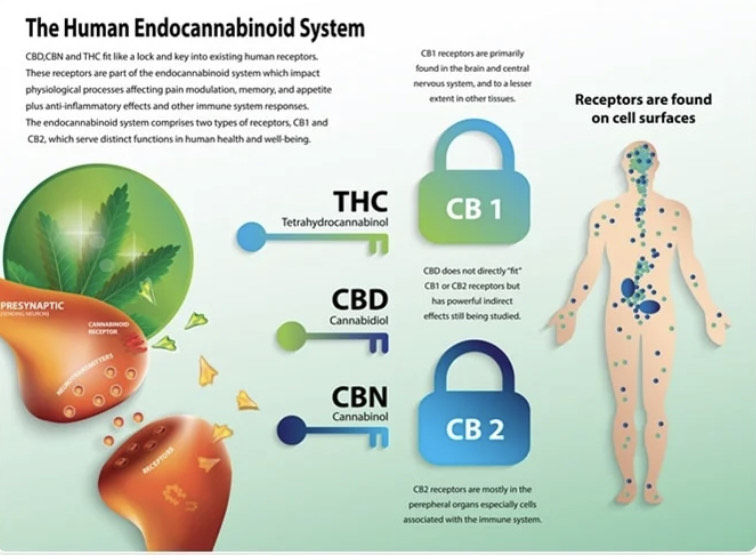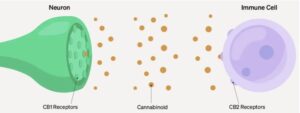We recently talked about the endocannabinoid system and what it does within our bodies. If you have not seen that post click here. The info we are going to share here about the ECS receptors will make more sense once you read The Endocannabinoid System explanation.
There are 2 main types of cannabinoid receptors within the ECS. These receptors are scattered throughout the body. The central nervous system, digestive tract, spleen, cardiovascular system, respiratory system, endocrine system and even the reproductive system.
The first of these receptors are called CB1 receptors. Many of the CB1 Receptors are found in the brain or the central nervous system.
But they are also found in the kidneys, liver, and the lungs. They are involved in the regulation of pain, mood, sleep, and memory. They are even involved in appetite by playing a role in the release of ghrelin, the hormone which impacts hunger. CB1 receptor activation also has an impact on our digestive system.
The main endogenous cannabinoid or endocannabinoid that binds with CB1 receptors is anandamide. We will be explaining Anandamide and 2-Ag in another post.
Another main activator is THC or Tetrahydrocannabinol which is a phytocannabinoid found within the cannabis plant. We will be going more in depth on this cannabinoid and others in another post as well.
The second of these receptors are the CB2 receptors which are mainly present in the peripheral nervous system.
Also found in the immune system, including the immune system tissues, digestive system, the spleen, the tonsils, and thymus gland. They are even found on immune system cells, including monocytes, t-cells, b-cells, and macrophages.
CB2 receptors play a role in regulating inflammation. Within the immune system these receptors are involved with cytokine release. Cytokines help to tell the immune system what to do with a health issue or health risk. Because of this it is believed the CB2 receptors are activated when immune or inflammation issues are signaled.
Now that we have a understanding of the receptors and their function within our bodies we have the knowledge to learn about the endocannabinoids that trigger these receptors. Our next post will explain those in detail.



